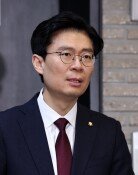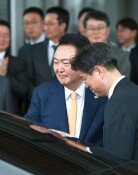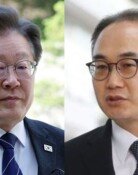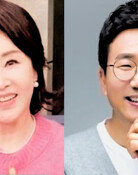Scholar Studies 1904 Student Expulsions
Scholar Studies 1904 Student Expulsions
Posted December. 30, 2005 03:21,
It all started when in June 2004, Hajime Takei (42), a part-time teacher at Hibiya High School in Tokyo, found a clipping from a Korean newspaper in his school dated August 7,1977.
The news article reported that 70 years earlier, 44 students who had been specially dispatched by Chosun Royal Family, including Choi Lin and Choi Nam-seon, to study at the First Tokyo Middle School (now Hibiya High School) in 1905 were all kicked out of the school after they staged a school strike in protest against the 1905 Convention between Korea and Japan.
Based on the article, Takei started looking for related historical records by searching alumni bulletins of the time and traveling between Korea and Japan.
After a year and a half of effort, he recently published a book titled, 50 Special Students from Korea.
Hibiya High School, built in 1878, is the best public high school in Japan. Takei, a Hibiya graduate, now teaches social studies and Korean at the school.
The time when Korean students came to Japan to study in early 1900s was a time of many problems between Korea and Japan originated from, said Takei, I found and collected documents one by one, and it was as if the spirits of those who lived a century ago were guiding me.
He used the alumni bulletin of Hibiya High School, a diplomatic document of the Japanese Ministry of Foreign Affairs, and Dong-yoo-yak-cho, a journal of Cho Yong-eun (the real name of Independent activist Cho So-ang) to retrace the path of Korean students in Japan 100 years ago.
In 1904, the Chosun government selected 50 students aged 16 to 25 and granted them state scholarships to study abroad. Among them , 44 entered Hibiya High School.
The schools decision to kick all of them out of the school turned into a diplomatic issue between Korea and Japan, and in the following year, 25 of them re-entered the school. However, Choi Lin was tabbed as the instigator of the student strike and was expelled from the school. Choi Nam-seon dropped out of the school, and Cho Yong-eun was the only one who graduated from Hibiya.
Takei noted that he was struck by the different stances each documents had. Each different document had a different interpretation of the incident.
Then principal Katsuura may have worked hard for education of Korean students. Yet, in the eyes of Korean students at Hibiya, he was a person who restrained and suppressed them. Likewise, the students may have tried to study hard for their motherland. But Katsuura didnt see them that way. After all, it was not an issue of who was right and who was wrong. It was an issue of the conditions Japan and Korea were facing at the time, and an issue of the differing cultures of the two countries, Takei said.
Young-A Soh sya@donga.com







